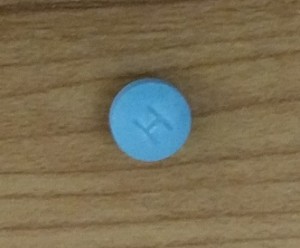Update: There are now various online sources that offer coupons with huge discounts for drugs such as generic Finasteride if you are purchasing them with cash and without any insurance. You need to print the coupon and take it to the pharmacy with your prescription.
Generic Finasteride 1mg (Branded = Propecia)
In November 2013, US-based Merck’s patent on hair loss drug Propecia (made up of Finasteride 1mg) finally expired. Thereafter, numerous generic versions of Finasteride 1mg have come into the US market at a small fraction of the cost of Propecia. I assume the same is true in other countries and blog readers are free to post their findings in the comments to this post.
Today, I called or visited a few major pharmacies in the US to get more information on the cost and country of origin of manufacture of these generic drugs, as well as to find out the name of the company that manufactures these products. If I buy a generic drug, at the very least, I want to check out information on the company that is manufacturing the product and try to make sure that the company has not been frequently cited for bad practices or worse.
Several pharmacists I talked to were uncertain about whether a company made or just packaged these products, but I tried to check my findings online and hopefully there are no errors in the below table.
5mg (Branded = Proscar)
It should also be noted that Merck’s patent on benign prostate hyperplasia (BPH — aka prostate enlargement) drug Proscar (made up of Finasteride 5mg) expired as far back as June 2006. Thousands of people have since been purchasing generic versions of Finasteride 5mg and then cutting each pill into 4 pieces with a pill cutter (i.e., essentially taking 1.25mg of Finasteride per day to treat baldness rather than BPH). This method always works out to be a lot cheaper than purchasing generic Finasteride 1mg pills.
Most hair transplant surgeons are willing to prescribe generic Finasteride 5mg pills to combat hair loss, even though the 5mg dosage has officially only been approved to treat BPH. Therefore I also decided to add information on generic Finasteride 5mg in the below table. I have been taking generic 5mg Finasteride pills for years to help my hair, although I take the 1 quarter (1.25 mg) pill every two days rather than daily. FYI — The half-life of Finasteride is 6 hours.
Generic Finasteride Cost (1mg and 5mg)
According to a pharmacist I talked to at Walmart, there are numerous types of discount cards available these days that will get you $50 off a prescription. She said she was not allowed to tell me where to get such cards, but they are easy to find.
Also note that at Walgreens, the 30 generic Finasteride 5mg pills made by Teva Pharmaceutical (Israel) will only cost $10 rather than $84 if you enroll in the Walgreens prescription savings program for $20 per year. Other pharmacies probably also have savings programs.
Note: Prices and brands at the same pharmacy chains may vary by state. Also keep in mind that many stores will price match.
| Pharmacy Name | Generic Finasteride (1mg) — 30 pills | Company Name (Country of Manufacture) | Generic Finasteride (5mg) — 30 pills | Company Name (Country of Manufacture) |
| Costco | $13 | Actavis (India) | $12 | Aurobindo Pharma (India) |
| CVS | $70 | Camber Pharmaceuticals (India) | $82 | Camber Pharmaceuticals (India) |
| Rite Aid | $80 | Aurobindo Pharma (India) | $76 | Aurobindo Pharma (India) |
| Safeway | $60 | Actavis (India) | $40 | Accord (India) |
| Sam’s Club | $37 | Camber Pharmaceuticals (India) | $26 | Actavis (India) |
| Target | $83 | Aurobindo Pharma (India) | $9 | Camber Pharmaceuticals (India) |
| Walgreens | $80 | Dr. Reddy’s (India) | $84 | Teva Pharmaceutical (Israel) |
| Walmart | $44 | Hetero Drugs (India) | $9 | Camber Pharmaceuticals (India) |
Propecia and Proscar Prices
Note that if you do not want to take generic Finasteride, the cheapest price for 30 pills of Propecia (made by US-based Merck) is $30 at Walgreens if you are enrolled in their prescription savings program. 30 pills of Proscar (made by Merck) will also cost $30 at Walgreen’s if you are enrolled in their prescription savings program. I wish I had known about this program before!
For most people, 30 pills of Proscar will last for 4 months after cutting each pill into 4 pieces and taking 1 daily. For me, it will last for 8 months, so I would rather purchase Proscar at this low price rather than generics.
If Walgreen’s stops offering this discounted price, the typical price of 30 pills of Propecia at most pharmacies is around $100 and the typical price of 30 pills of Proscar at most pharmacies is $150-$200. At that point, generics are a no-brainer.
The generic pills that I currently use are the 5mg ones made by Camber Pharmaceuticals. I hope to send one of the pills to a lab to test and make sure that they are identical to Proscar. A local custom pharmacy that I contacted did not offer such a service. Perhaps I need to go and approach a university’s chemistry lab?
Photo of my generic Finasteride 5mg pill:
